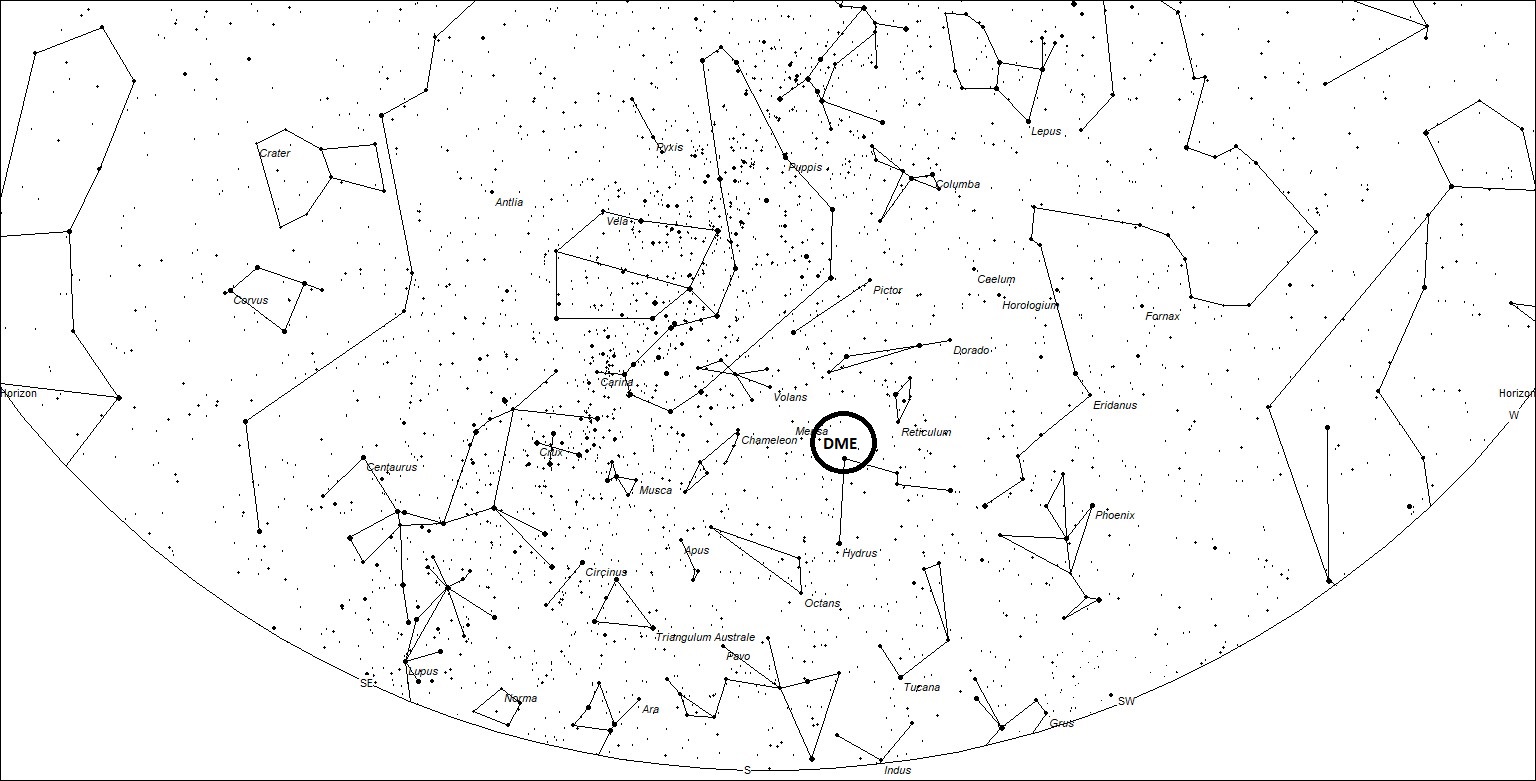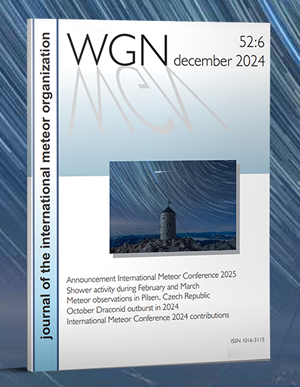Observers from the Southern Hemisphere have reported activity from the little-known shower known as the delta Mensids DME #130. Unfortunately the radiant for this shower only lies 16 degrees from the south celestial pole, which means these meteors are practically invisible from the Northern Hemisphere. This shower was first noted in 1969 by G. Gartrell, using radar equipment at the University of Adelaide. These meteors were thought to be associated with comet C/1804 E1 Pons. Shortly after discovery, these meteors were followed visually by Jeff Wood from Australia during the 1970’s and 1980’s. He noted these meteors were active March 14-21, with maximum activity occurring on March 18*. This shower has virtually been ignored since 1990, until last year when notable activity was recorded on video equipment in the Southern Hemisphere. The peak last year occurred on March 12 and this was again repeated on this date in 2021. In 2020, the dates of March 20 and March 22 also provided stronger than normal rates. This is again possible this year.
 This chart depicts the southern half of the sky as seen at dusk this weekend from Sydney, Australia. The circle denotes the delta Mensid radiant.
This chart depicts the southern half of the sky as seen at dusk this weekend from Sydney, Australia. The circle denotes the delta Mensid radiant.The constellation of Mensa (the table) lies in the deep southern sky. The nearest constellation of note is Carina (the keel), which lies 10 degrees to the north and east. During this time of year Mensa lies west of the south celestial pole at dusk and swings beneath the pole as the night progresses. By the time it becomes dark at the equator, the radiant only lies 10 degrees high and continues to set through the evening hours. Locations further south are much more favored as the radiant actually remains above the horizon all night long from sites south of 16 degrees south latitude. So this will be one of the rare opportunities to view meteor activity as soon as it becomes dark. This weekend the moon will be near its first quarter phase and will set during the late evening hours for viewers located in the Southern Hemisphere. It will be in the opposite portion of the sky so there will be little interference for observers facing south.
The best viewing strategy would be to start as soon as it becomes totally dark. Face due south at an elevation of 45 degrees (half-way up in the sky). Any DME meteors will intersect the radiant if the meteors path is projected backwards. With an entry velocity of 30km/sec., they will possess medium-slow velocities. There will also be random meteor activity appearing haphazardly all over the sky with various velocities. These are not associated with the delta Mensids but still should be logged into your viewing session. Once again, it should be noted that observers in the Northern Hemisphere will not see this activity due to its far southern location.
To provide a scientific useful observing session one needs to carefully note the starting and ending time of your session and the time each meteor appears. The type of meteor needs to be recorded (delta Mensid vs. sporadic) as well as its magnitude. Other parameters that can be recorded are colors, velocity (degrees per second or verbal description) and whether the meteor left a persistent train. Fireballs (meteors brighter than magnitude -4) should be noted and a separate online form filled out after the session.
Serious observers should watch for at least an hour as numerous peaks and valleys of activity will occur. If you only view for a short time it may coincide with a lull of activity. Watching for at least an hour guarantees you will get to see the best this display has to offer. Visual observers are also encouraged to fill out a visual observing form on the website of the International Meteor Organization located at: https://www.imo.net/members/imo_registration/register/ . You must register to use the form but this is free. Others may also share their viewing experience by commenting to this article.
*Kronk, Gary (2014). “Meteor Showers: An Annotated Catalog” (Second Edition) page 60.




 You saw something bright and fast? Like a huge shooting star? Report it: it may be a fireball.
You saw something bright and fast? Like a huge shooting star? Report it: it may be a fireball.  You counted meteors last night? Share your results with us!
You counted meteors last night? Share your results with us!  You took a photo of a meteor or fireball? You have a screenshot of your cam? Share it with us!
You took a photo of a meteor or fireball? You have a screenshot of your cam? Share it with us!  You caught a meteor or fireball on video? Share your video with us!
You caught a meteor or fireball on video? Share your video with us!